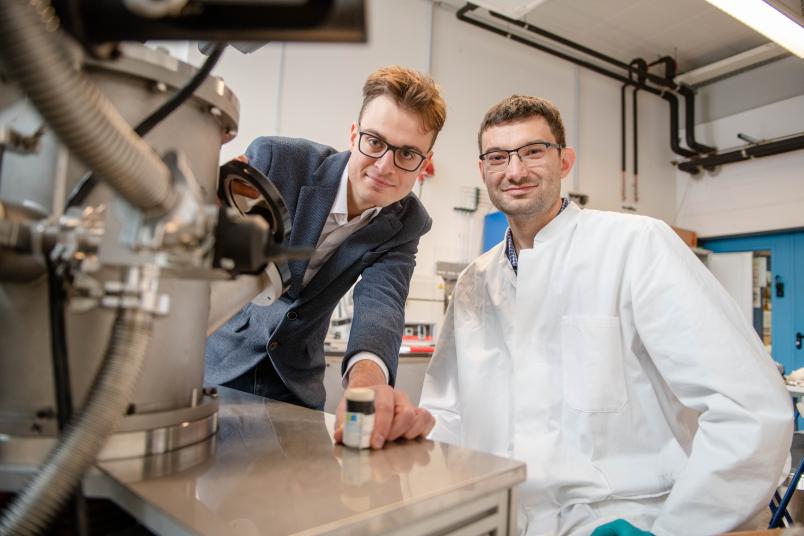
Material research
An alloy that retains its memory at high temperatures
Even after the hundredth time the material returns to its original shape when heated.
Using computer simulations, Alberto Ferrari calculated a design proposal for a shape memory alloy that retains its efficiency for a long time even at high temperatures. Alexander Paulsen manufactured it and experimentally confirmed the prediction. The alloy of titanium, tantalum, and scandium is more than just a new high-temperature shape memory alloy. Rather, the research team from the Interdisciplinary Centre for Advanced Materials Simulation (Icams) and the Institute for Materials at Ruhr-Universität Bochum (RUB) has also demonstrated how theoretical predictions can be used to produce new materials more quickly. The group published its report in the journal Physical Review Materials from 21 October 2019. Their work was showcased as Editor’s suggestion.
Avoiding the unwanted phase
Shape memory alloys can re-establish their original shape after deformation when the temperature changes. This phenomenon is based on a transformation of the crystal lattice in which the atoms of the metals are arranged. Researchers refer to this as a phase transformation. “In addition to the desired phases, there are also others that form permanently and considerably weaken or even completely destroy the shape memory effect,” explains Dr. Jan Frenzel from the Institute for Materials. The so-called omega phase occurs at a specific temperature, depending on the composition of the material. To date, many shape memory alloys for the high temperature range would withstand only a few deformations before they became unusable once the omega phase is formed.
Promising shape memory alloys for high temperature applications are based on a mixture of titanium and tantalum. By changing the proportions of these metals in the alloy, researchers can influence the temperature at which the omega phase occurs. “However, when moving this temperature upward, the temperature of the desired phase transformation is unfortunately lowered in the process,” says Jan Frenzel.
Addition of third element alters properties
The RUB researchers attempted to understand the mechanisms of the onset of the omega phase in detail, in order to find ways to improve the performance of shape memory alloys for the high-temperature range. Therefore, Alberto Ferrari, PhD researcher at Icams, calculated the stability of the respective phases as a function of temperature for different compositions of titanium and tantalum. “With his calculations, Alberto was able to confirm the results of the experiments,” Dr. Jutta Rogal from Icams points out.
In the next step, Alberto Ferrari simulated small amounts of third elements being added to the shape memory alloy of titanium and tantalum. He selected the candidates according to specific criteria, for example they should be as little toxic as possible. It emerged that alloying of a few percent of scandium would have to result in the alloy functioning for a long time even at high temperatures. “Even though scandium belongs to the rare earths and is, consequently, expensive, we only need very little of it, which is why it is still worth using it”, explains Jan Frenzel.
Prediction is accurate
Alexander Paulsen then produced the alloy suggested by Alberto Ferrari at the Institute for Materials and tested its properties in experimentally: the results confirmed the calculations. A microscopic examination of the samples later proved that even after many deformations no omega phase was found in the crystal lattice of the alloy. “We have not only strengened our basic knowledge of titanium-based shape memory alloys and developed possible new high-temperature shape memory alloys,” says Jan Frenzel. “Moreover, it’s great that the prediction of computer simulations are so accurate.” Since the production of such alloys is very complex, the implementation of computer-aided design for new materials promises much faster success.